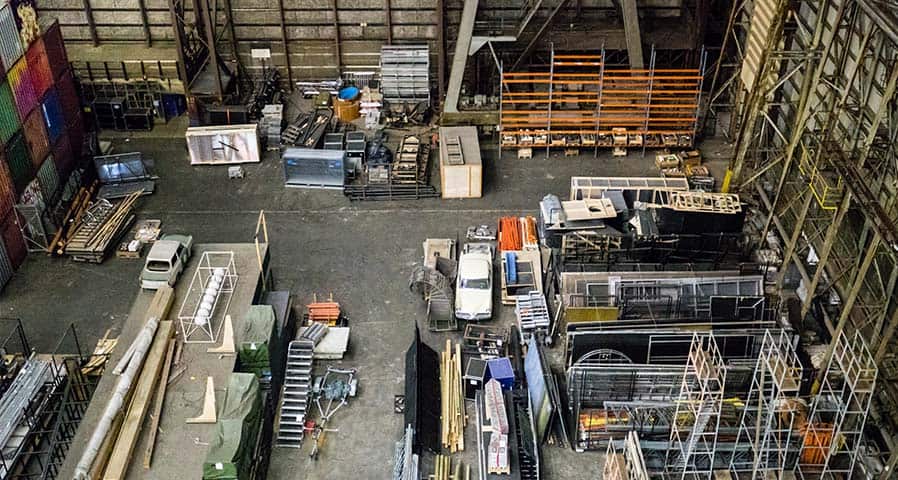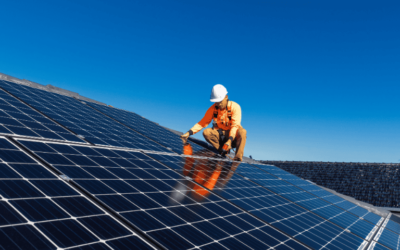Along with the benefits you get with LED lighting, you can also take advantage of controls that offer more functionality, automation, and energy savings. It is a reason the LED lighting industry is continuing to grow. In 2021, the LED global market had an estimated worth of more than $55 billion.
You want your industrial building design to meet modern lighting expectations. However, not everyone knows where to start.
If you are new to LED lighting controls, keep reading to learn more.
Why You Should Use LED Lighting Controls in Your Industrial Complex
The primary benefit you get from LED lighting controls is reduced energy usage. Even though you are paying out-of-pocket for the controls, the money you save on energy costs easily covers the expense.
Networked lighting controls also offer flexibility. Whether it’s a new or existing building, you cannot always predict how a space is going to be used. Having this flexibility allows you to meet visibility challenges without spending extra when design plans change.
LED lighting controls even benefit the environment and community. The energy-efficient controls reduce your building’s load on the power grid helping to ensure the community’s electrical needs are met. Reducing energy consumption is also beneficial to the environment and shows consumers you are implementing sustainable practices.
Did you know there are major LED and lighting control incentives and rebates? Over 75% of the US has available LED and lighting control incentives and rebates. Our affiliated company Incentive Rebate360 offers full turnkey incentive and rebate recovery services, which you can view here.
Types of LED Lighting Controls for Industrial Buildings
Lighting demands change throughout the day. It is also your responsibility to ensure the building’s lighting layout optimizes functionality.
Industrial complexes that close in the evening can use properly placed external LED lights to prevent crime by illuminating parking lots and the building’s exterior.
Exterior LED lighting also benefits complexes that work around the clock. At night, when loading and unloading of goods is often done the lights ensure employees have adequate visibility.
Another example is medical facilities. Staff in these complexes require plenty of light to work with their patients.
However, regardless of the hours of operation, most industrial complexes have spaces that are not always in use. Ambient light also changes throughout the day. Scenarios like these are when automated LED lighting controls are useful to save energy and money.
Here’s a look a some of the different types of LED lighting controls to consider for industrial complexes.
Controls That Synchronize with Local Time
Advanced LED lighting controls often come with internet connectivity. It allows you to automate the controls to the area’s date and time.
Using this type of control on your outdoor lighting allows you to program the controls to adjust to sunrise and sunset. It ensures the lights are not on during the day, reducing your energy usage. It also improves safety and security around the industrial complex at night.
These controls also have indoor applications. The sensors can adjust the light’s brightness according to the amount of ambient light in the building. If your building shuts down for the night, the controls will automatically dim the lights.
You can even install the controls in rooms that only require bright light for a limited time. When the task is completed, the controls save energy by dimming the lights.
Occupancy Sensors
Motion or occupancy sensors are often found in spaces that are not always in use. Think of conference, meeting, and break rooms. The sensors also work well in bathrooms and storage areas.
The controls automatically turn the lights on when movement is sensed. When the area is unoccupied, the sensors turn the lights off.
Daylight Harvesting Controls
Industrial buildings want to make the most of the natural light streaming in from windows and skylights. Whether the facility has lots of large windows, a few small ones, or open bay doors during the day, you don’t want to waste the natural light.
Daylight harvesting controls function similarly to dimmers. When the controls sense bright sunlight in the area, they automatically reduce the artificial light.
While this type of LED lighting control will not work in all spaces, it’s something to consider using in your industrial building’s design plan.
Demand Response Controls
LED lighting controls with network connectivity often can work with Demand Response Controls. It automatically adjusts lighting levels based on a few factors.
You can set the controls to dim the lights during peak usage hours. Not only does this help reduce energy costs, but it also lightens the load placed on the power grid. You can save money on energy costs while also ensuring your neighbors’ energy needs are being met.
Networked Lighting Controls Work Together
It’s a good idea to integrate your LED lighting, especially in industrial buildings and complexes. It will make it easier to manage the lighting across large spaces.
You can use software to remotely control the lights. It also gives you the flexibility to keep up when the functionality of the area changes. For example, when a seldom-used office becomes occupied full time.
Networked LED lighting control systems also provide real-time data. You can track energy usage, see which lights are in use, and monitor the performance of the fixtures. If a light goes out, you instantly know. It’s an easy way to stay current with your lighting system’s performance.
Meet Building Compliance Codes with LED Lighting Controls
LED lighting controls for industrial complexes help the buildings meet energy codes. Most states have energy efficiency standards in place that regulate how much energy your building can consume.
Before implementing a building design plan, it’s recommended that you familiarize yourself with local energy codes. It is easier to meet these regulations by using LED lighting throughout the complex.
Let Action Services Group Help with Your LED Lighting Design
Whether you are in the planning stages or ready to start the installation, let our professionals help you from the project’s start to finish. We will ensure your industrial building meets local codes and the lighting controls are installed in areas that will bring you the most value. Contact us today to learn more by calling 610-558-9773, emailing [email protected], or schedule a call that fits your needs by clicking the button below.








































0 Comments